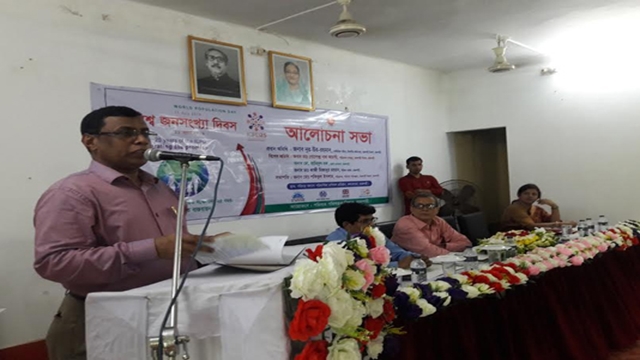FT Online
Published:2019-07-14 21:30:12 BdST
30,356 people adopt permanent birth control method in Rajshahi
Around 30,356 fertile people including 23,124 women have adopted permanent birth control method in eight districts under Rajshahi division during last two years till June last.
46,418 women used intra uterine device (IUD) and 1,14,058 other women
received implants as long-term birth control method during the same period.
Shafiqul Islam, Divisional Director of Department of Family Planning, here
said there are also achievements in providing services of temporary
contraceptives.
He said 5,54,735 injections and 13,47,384 oral pills were given to the
targeted women side by side with distributing 1,94,612 condoms among the
enlisted males.
Islam revealed this information while presiding over a post-rally
discussion at conference hall of Family Welfare Visitors Training Institute
here yesterday.
Department of Family Planning (DFP) organized the discussion in observance
of the World Population Day-2019. “25 years of the ICPD: accelerating the
promise” was the main theme of the discussion.
Commissioner of Rajshahi division Nur-Ur-Rahman addressed the meeting as
chief guest while Divisional Director of Health Dr Gopendra Nath Acharya,
Deputy Commissioner Hamidul Haque and Civil Surgeon Dr Kazi Mijanur Rahman
spoke as special guests. DFP Deputy Director Dr Nasim Akhter welcomed the
participants.
Shafiqul Islam told the meeting that the population and reproductive
growth rates have been decreased to 1.25 percent and 2.1 percent respectively
by dint of field level uninterrupted supply of contraceptive items during
last ten years in the division.
In 2009, the increasing rate of population and reproduction was 1.39
percent and 2.2 percent respectively in the division.
Rate of contraceptive users has been increased to 71.6 percent at present
from 67.4 percent in 2009 as contraceptive materials and 22 category
medicines are being supplied free of cost from all the service centres.
“We have also achieved success in reducing the rate of maternal and child
mortality,” he said categorically adding that maternal and child mortality
rate has been decreased to 1.7 percent at present from 3.2 and 4.8 percent
respectively among 1,000 live birth in 2009.
Eight new 10-bed mother and baby welfare centres (MBWC) were constructed
for providing emergency postnatal cares, reports BSS.
A total of 395 including two new union health and family welfare centres
(UHFWC) are encouraging the grassroots people to get services.
Some 310 UHFWCs are providing normal delivery services round the clock
contributing a lot towards reducing maternal mortality. ‘Mayer Bank’ has been
launched to encourage institutional delivery.
Emergency service package for newborns is being introduced at all service
centres in phases. Adolescents-friendly health corner has been launched in
two MBWCs and 20 UHFWCs. Emergency obstetrics care services are continuing in
district level MBWCs.
Upazila level people are getting maternal and child healthcare and family
planning services from 12 MBWCs.
A model family planning clinic has been set up at Rajshahi Medical College
Hospital providing services to the target people regularly.
Unauthorized use or reproduction of The Finance Today content for commercial purposes is strictly prohibited.


